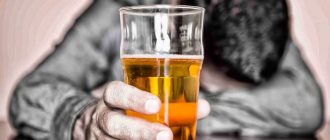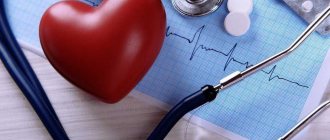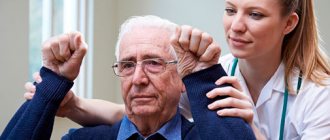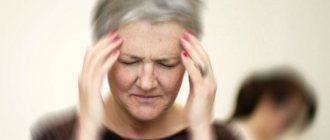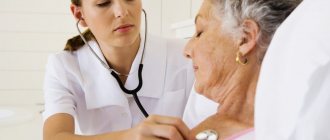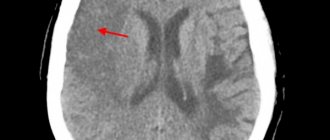Content:
- Types and differences
- After a stroke
- The influence of alcohol
- Is it possible to drink alcohol after a stroke?
- What kind of alcohol is possible
Almost always, the main reasons for apoplexy are poor lifestyle, stress and lack of exercise. Its likelihood is also high with alcohol abuse. For some, resuscitation is a warning from above and an incentive to seriously think about their health. For others, it is an annoying obstacle to their usual way of life. The habit of drinking gives rise to impatience and confidence that a little alcohol after a stroke will not hurt, and then they even begin to drink as if the bony hand of death was not lifting its ax over them.
Types and differences
The first symptoms appear within a few minutes. A sudden disruption of cerebral blood flow in rare cases lasts for several hours. Without oxygen, brain cells die, often irreversibly impairing basic body functions. Specific disorders depend on the lesion: motor, speech, coordination, visual. Consciousness, as a rule, is preserved.
A critical condition is caused by one of the following forms of critical change:
- Ischemic (cerebral infarction). Occurs when there is an acute lack of blood circulation; neurons die from severe hypoxia. The blood flow is blocked by a thrombus. The most common form of the disease, this type occurs in almost 87% of all cases. Usually observed in patients with atherosclerosis, diabetes mellitus, and heart defects.
- Hemorrhagic. When a vessel ruptures, the transport of nutrients and oxygen to the tissues is disrupted, and the resulting hematoma compresses the surrounding cells, causing their necrosis. Divided into types:
- Intracerebral hemorrhage: patients with hypertension are at risk;
- Subarchanoid type - blood pours into the space between the brain and spinal cord, into the cerebrospinal fluid. Usually the disease strikes those who abuse smoking and alcohol, are overweight, and have high blood pressure.
A third type of TIA (transient ischemic attack) is possible. The process is called a mini-stroke. The supply of brain cells is temporarily blocked by a blood clot.
Important . The short-term phenomenon lasts no more than five minutes: during this time, the clot dissolves or moves, freeing the passage. It does not cause irreparable complications, so it often goes unattended, but it is after it that in almost half of the cases a blow of the first or second type occurs.
After a stroke
When certain areas of the brain die, basic functions are disrupted. The victim may remain permanently disabled: he needs constant assistance to move, communicate, drink and eat, perform physiological functions and hygiene procedures. At the same time, consciousness is most often preserved, which makes care even more difficult, since in this state a person often becomes capricious and selfish.
The following stages of the disease are distinguished:
- acute (1–3 days);
- acute (up to 28 days);
- early recovery (up to six months);
- late recovery (up to 2 years);
- residual effects (more than 2 years).
Each period is characterized by certain symptoms, course of therapy and lifestyle.
After leaving the hospital, you must follow the doctor’s recommendations, forget about cigarettes and, of course, eliminate the negative effects of alcohol after a stroke. The neurologist explains in detail to the patient that during the year, high-grade drinks are subject to a strict taboo; their use is strictly prohibited during active therapy and during rehabilitation.
Sugary sodas, fatty foods and stress are prohibited. But, if drinkers do not experience any acute cravings for sweets or rich food and can easily endure restrictions, then it is difficult for them to give up strong drinks. And they often engage in self-deception, coming up with convincing arguments that a couple of drinks are even beneficial. This is a very dangerous misconception, which often leads to the next attack with a very high probability of death.
Expert opinion. Drinking alcoholic beverages causes a “swing”: the blood vessels first expand and then sharply narrow, changing the pressure. The cycle continues until all ethanol has been metabolized. This is a huge burden: there is a very high risk of their rupture and a second blow, which is usually more dangerous than the first, and the patient often cannot be saved.
Stages of treatment
If signs of a stroke are detected during or after binge drinking, first aid is as follows:
- call an emergency ambulance;
- avoid further drinking of alcohol;
- calm the victim and limit his movements by placing him in bed until the doctors arrive.
To preserve the integrity of the clinical picture, it is prohibited to give any medications, force someone to drink water, or bring a person to his senses by braking or patting the cheeks. The condition of an acute stroke poses a threat to a person’s life and requires immediate medical, sometimes resuscitation, care.
The influence of alcohol
The consequences of alcohol are always negative, no matter how hard his fans try to convince him otherwise. Ethanol metabolites have a destructive effect on the vascular wall and nervous tissue. The combination of the toxic effects of alcohol and hypoxia enlarges the affected area and slows down recovery.
Ethanol disrupts metabolic processes and increases the level of LDL - low-density lipoproteins responsible for the formation of atherosclerotic plaques. Most often, a high-grade feast is accompanied by an abundance of fatty foods with a high cholesterol content.
And the intoxicating drink itself is very high in calories, but its calories are empty - they do not provide energy and nutrition, but their excess logically results in obesity. The load on the heart increases, its oxygen supply deteriorates, and arterial hypertension gradually develops.
Regular intake of ethyl toxin into the body causes dangerous disorders:
- Development of CVD: atherosclerosis, thrombosis, expansion and thinning of vascular walls.
- Loss of control over sensations, and as a result, the inability to notice the initial symptoms of serious illnesses in time.
- Increased cholesterol levels, its deposition in the form of plaques, excess weight.
- Increased blood pressure and blood sugar are risk factors.
Expert opinion . Toxins contained in alcohol destroy red blood cells, which carry oxygen through the bloodstream. Together with fatty foods, they provoke hypertension. If cardiovascular diseases have a hereditary predisposition, they can serve as an additional factor for the development of acute vascular spasm and hemorrhage.
“Can I have a glass of wine?”
Patients often ask about this - both those who are preparing for the IVF protocol and those who are already undergoing a cycle. Since the problem is so relevant, let’s look at it in more detail. Let's talk about this with obstetrician-gynecologist, reproductive specialist at GMS IVF Yulia Kikina.
The Minister of Health of the Russian Federation, Veronika Skvortsova, recently officially announced the health benefits of small doses of alcohol*. We can quite agree with this. Our great mentor Hippocrates left us as a legacy not only an oath, but also a description of wine as a healing agent (antiseptic, diuretic, sedative and even as a solvent for medicines).
Is it possible to drink alcohol after a stroke?
Many alcoholics claim that it dilates blood vessels, improving blood circulation in the brain, so a glass of good cognac or a glass of beer won’t hurt. But after a sharp expansion, an equally rapid reflex contraction occurs.
After an ischemic stroke, atherosclerotic damage to the arterial walls becomes an increased risk factor. Even a single use of wine causes their contraction and narrowing and causes a second blow. The affected area is larger the second time; such an attack is highly likely to result in death or severe disability. Ethanol disrupts the binding of red blood cells to hemoglobin, reducing oxygen saturation and increasing ischemia. And neurons are very sensitive to hypoxia.
Alcohol after a hemorrhagic stroke leads to an abrupt increase in blood pressure and vascular spasm. The weak wall of the arteries is not able to withstand such pressure and ruptures. Ethyl alcohol reduces blood viscosity, which is accompanied by heavy bleeding, increasing the risk of death. With active therapy, the doctor usually prescribes antihypertensive therapy, but crises also occur against the background of normal blood pressure.
We must not forget about the toxic effect of acetaldehyde, which destroys nerve cells and the connections between them. Even if resuscitation was avoided, encephalopathy gradually develops.
The effect of intoxicating drink is greatly enhanced when combined with cigarettes or coffee. The dilation of blood vessels is quickly replaced by narrowing; with such a “dance” they may not be able to withstand it even in healthy people.
After complete stabilization, twelve months after leaving the hospital, only after consulting the treating doctor and regular examinations to exclude a relapse, you are allowed to drink a little. It is important to control blood pressure, follow the doctor’s instructions, and monitor lipid balance to minimize the risk of re-hemorrhage.
Staying in hospital
A mandatory condition for treating stroke after heavy drinking is complete abstinence from any alcoholic beverages.
Treatment includes emergency prehospital care and inpatient therapy until vital signs, neurological status and hemodynamics are stabilized. Next, a period of rehabilitation is required.
The following groups of drugs are used in the hospital:
- antihypertensive drugs to normalize blood pressure;
- anticoagulants to reduce blood clotting, reduce the risk of formation and dissolution of existing clots;
- medications to normalize neurological status and vascular drugs to improve blood circulation and nutrition of the brain;
- antioxidants to relieve post-ischemic oxidative stress.
Treatment of alcoholic stroke is long-term, the prognosis is individual in each specific case.
What kind of alcohol is possible
When choosing alcohol, you need to focus on quality, not quantity or price. You should not choose high-calorie sweet liqueurs, cheap substitutes from an unknown manufacturer, and give preference to quality drinks:
- no more than 50 g of vodka or cognac;
- about a glass of wine (150 g), it is better to choose red;
- 300 g of beer.
Such a relaxation is allowed only to those who have completed a full course of rehabilitation, monitor their health indicators and do not have other bad habits. But an attack is a clear indicator of the body’s dysfunction, so it is better to give up drinking completely or allow yourself a small dose extremely rarely, and only the doctor decides how much alcohol you can drink after a stroke.
Drinking alcohol after a stroke is an inexhaustible topic of debate among professionals. Some believe that high-quality grape products help strengthen arterial walls and improve blood circulation, and break down cholesterol plaques. Others argue that ethyl alcohol in any form is poison, and no beneficial properties will outweigh the harm that ethanol and its metabolites have on the body.
Expert opinion. The benefit of alcoholic products in preventing vascular spasms has not received convincing evidence, so the risk of recurrent attacks still remains. In order not to tempt fate, the most correct thing is to simply refuse them. And for health it is better to drink their non-alcoholic analogue - grape juice.
Rehabilitation therapy
After stabilization of the pathological condition and improvement, the patient is prescribed restorative drug treatment, a course of massage and physical therapy, physiotherapeutic procedures, dietary nutrition and adherence to a daily routine. To regain speech, regular classes with a speech therapist-defectologist are necessary.
They use drugs to normalize the functions of the nervous system - Cerebrolysin, Glycine, Piracetam and a complex of vitamins and minerals. If depression and sleep disorders occur, antidepressants are indicated.
